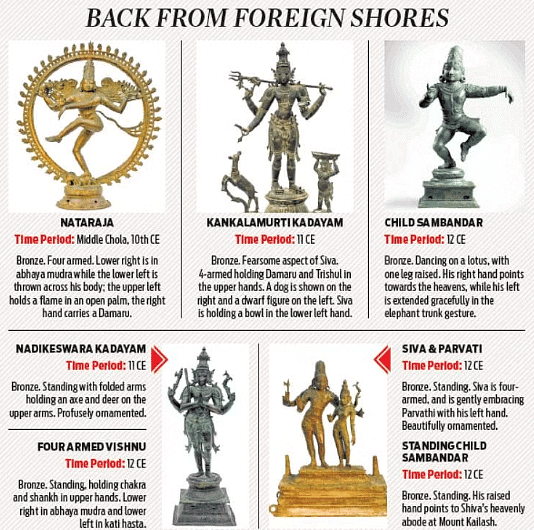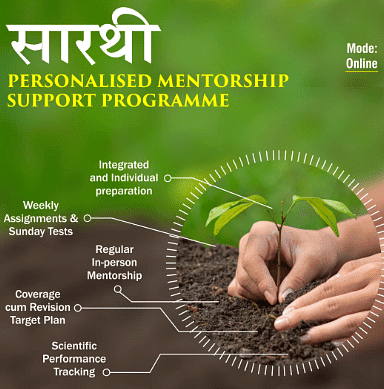UPSC Exam > UPSC Notes > Gist of Rajya Sabha TV / RSTV (now Sansad TV) > PERSPECTIVE: Safeguarding Cultural Heritage
PERSPECTIVE: Safeguarding Cultural Heritage | Gist of Rajya Sabha TV / RSTV (now Sansad TV) - UPSC PDF Download
 A parliamentary panel has proposed the establishment of a dedicated team for safeguarding stolen antiquities, emphasizing the importance of cultural heritage preservation.
A parliamentary panel has proposed the establishment of a dedicated team for safeguarding stolen antiquities, emphasizing the importance of cultural heritage preservation.
Revised Details
- The Parliamentary Standing Committee on Transport, Tourism, and Culture, which is connected to the relevant department, made this recommendation in a report presented in both Houses of Parliament on Monday. In their "Three Hundred Forty-Eighth Report on the topic 'Heritage Theft - The Illegal Trade in Indian Antiquities and the Challenges of Retrieving and Safeguarding Our Tangible Cultural Heritage'," the committee suggested that the government could create a multi-departmental task force to expedite the retrieval process.
- As per the committee's suggestion, this task force should comprise senior officials from the Ministry of Home Affairs (for law enforcement and investigation), the Ministry of External Affairs (for coordination with foreign governments), the Archaeological Survey of India, as well as senior scholars and experts.
- India's diverse and rich artistic heritage faces an ongoing threat of extinction. Virtually every region possesses its own traditional art heritage. However, these cultural traditions are rapidly fading away due to globalization.
Revised Introduction
- Measures to protect intangible cultural heritage for intergenerational transmission differ significantly from those required to safeguard tangible heritage (both natural and cultural). Nevertheless, elements of tangible heritage are often intertwined with intangible cultural heritage. That's why the definition of intangible cultural heritage, as stated in the Convention, includes the instruments, objects, artifacts, and cultural spaces connected to it.
- India boasts one of the world's largest geopolitical expanses and a vast array of heritage. This extensive repository of India's heritage is globally recognized as a crucial part of its distinctive cultural identity. Beyond India's borders, several countries house some of the finest examples of Indian heritage in their museums, narrating the story of Indian culture and its colonial history. Meanwhile, in Southeast Asia, remarkable monuments stand as a testament to the influence of Indian culture.
- Initial assessments indicate that India possesses a total of approximately 400,000 heritage structures nationwide, including centrally protected monuments, state-protected monuments, heritage buildings managed by various religious trusts, historic cities, and archaeological sites.

The Indian Constitution divides jurisdiction over these monuments, cultural heritage, and archaeological sites as follows:
- Union: Ancient and Historical Monuments and Archaeological sites and remains declared by Parliament as nationally significant.
- State: Ancient and Historical Monuments that are not nationally significant according to Parliament.
- Concurrent: Both the Union and States share jurisdiction over archaeological sites and remains not declared as nationally significant by law and Parliament.
- Article 253 of the Indian Constitution empowers Parliament to legislate for the implementation of treaties, agreements, conventions with other countries, even if the subject matter falls under the State List of the Constitution of India.
Threats to Indian Art Heritage
- Shortage of Human Resources: Acute shortages of personnel in key positions within the Archaeological Survey of India (ASI) adversely affect monument security and maintenance.
- Lack of Reliable Database: ASI lacks a dependable database detailing the exact number of protected monuments within its jurisdiction.
- Inadequate Conservation Policy: ASI lacks an updated and approved Conservation Policy, hindering efforts to address conservation and preservation requirements. No prescribed criteria exist for prioritizing monuments in need of conservation, leading to arbitrary selection for conservation work.
- Governance Issues: Governance from the Ministry of Culture is deficient in several aspects, including policy and legislation adequacy, financial management, monitoring of conservation projects, and provision of human resources to relevant agencies.
- Funding Shortages: There is a shortage of funds for conservation projects and maintenance, exacerbated by flawed budgeting for conservation efforts.
The Impact of Preserving India's Heritage
- International Level: Preserving heritage as part of a Universal Shared Heritage can strengthen global relations, connect with historical cultural exchange routes, and draw lessons from international practices.
- National Level: Heritage can be a tool for nation-building and branding India's cultural identity, with iconic sites and monuments across regions, including World Heritage Sites that reflect its rich history.
- Local Level: Heritage preservation can guide the sustainable development of historic cities and sites at the local level, directly linking to community benefits and aligning with UN Sustainable Development Goals.
The Rationale Behind Preserving India's Heritage
Implications:
- There are various implications at international, national, and local levels when a country actively manages and preserves its heritage. India has been proactive in safeguarding its rich heritage since gaining independence, ensuring it is protected, conserved, and appropriately showcased.
Management:
- No country exists in isolation, and its global presence plays a crucial role in how other nations perceive it. Heritage management contributes to building global relations, including economic ties, by establishing connections based on historical trade routes, cultural exchanges, and shared traditions.
Conservation and Protection:
- At the national level, heritage protection and conservation play a significant role in nation-building and branding the country's cultural identity. India is home to numerous iconic sites and monuments with histories shaped by various dynasties and cultural influences, reflecting the complexity and richness of India's history.
Infrastructural Development:
- At the local level, heritage preservation fosters community unity and serves as an economic catalyst. Developing heritage sites leads to infrastructure improvement, job creation, entrepreneurial opportunities, and social development within local communities.
Proactive Government Initiatives and Schemes
- Digitization and Centralization of Information: The government is working toward creating a National Archaeological Database and a National GIS Database for heritage monuments and sites, authenticated and validated by ISRO.
- Archives Data: Efforts are directed at reactivating the National Mission on Monuments and Antiquities (NMMA) and ensuring digital accessibility of archives data while adhering to conservation norms.
- Restructuring the Archaeological Survey of India: A strategy is being developed to restructure ASI, establish connections with local stakeholders, support state governments and religious trusts in heritage conservation, and define bylaws for prohibited and regulated areas around heritage monuments.
- Heritage Development: Emphasis is placed on utilizing heritage as a tool for development and job creation, along with establishing partnerships for capacity building in heritage management.
Significance
Economic Significance:
- Cultural industries are vital components of modern economies, enhancing tourism, sustaining livelihoods, and attracting investment.
Historical-Social Significance:
- Culture preservation contributes to history preservation, knowledge development, and the fostering of creativity.
Way Forward
India's rich and diverse cultural heritage, including historical monuments, archaeological sites, and remnants, should be conserved and appreciated for their role in symbolizing India's unique culture and history. Overcoming challenges related to technology, such as obsolescence, limited IT personnel, and conversion costs, can be achieved through ongoing collaboration, research, and investment in emerging technologies. India's efforts in harnessing technology for cultural heritage preservation have yielded positive results, enabling the preservation, accessibility, and promotion of its cultural past.
Conclusion
Safeguarding measures for heritage should involve community consent and participation. In some cases, public intervention may not be desirable, as it could distort the value of heritage for the community. Additionally, safeguarding measures should respect customary practices governing access to specific aspects of heritage, such as sacred intangible cultural heritage or those considered secret.
The document PERSPECTIVE: Safeguarding Cultural Heritage | Gist of Rajya Sabha TV / RSTV (now Sansad TV) - UPSC is a part of the UPSC Course Gist of Rajya Sabha TV / RSTV (now Sansad TV).
All you need of UPSC at this link: UPSC
FAQs on PERSPECTIVE: Safeguarding Cultural Heritage - Gist of Rajya Sabha TV / RSTV (now Sansad TV) - UPSC
| 1. What is cultural heritage and why is it important to safeguard it? |  |
Ans. Cultural heritage refers to the unique customs, traditions, artifacts, and practices that are passed down from generation to generation within a society. It includes tangible aspects such as historical buildings, monuments, and artworks, as well as intangible aspects like language, music, and rituals. Safeguarding cultural heritage is important to preserve our diverse identities, promote social cohesion, and maintain a sense of belonging and continuity within communities.
| 2. How does UNESCO contribute to the safeguarding of cultural heritage? |  |
Ans. UNESCO (United Nations Educational, Scientific and Cultural Organization) plays a crucial role in the safeguarding of cultural heritage. It identifies and designates World Heritage Sites, which are places of outstanding universal value. UNESCO provides technical assistance, expertise, and financial support to countries for the preservation and conservation of these sites. It also promotes awareness and appreciation of cultural heritage through education, research, and capacity-building programs.
| 3. What are the challenges in safeguarding cultural heritage? |  |
Ans. Safeguarding cultural heritage faces several challenges. One major challenge is natural disasters such as earthquakes, floods, or fires that can cause extensive damage to historical sites and artifacts. Human activities such as urbanization, development projects, and armed conflicts also pose threats to cultural heritage. Additionally, the lack of resources, inadequate legislation, and insufficient awareness about the importance of preserving cultural heritage further hinder its safeguarding efforts.
| 4. How can individuals contribute to the safeguarding of cultural heritage? |  |
Ans. Individuals can contribute to the safeguarding of cultural heritage in various ways. Firstly, they can participate in community initiatives and volunteer for organizations that work towards preserving cultural heritage. By promoting awareness and appreciation of cultural heritage within their communities, individuals can help create a sense of responsibility and ownership towards it. Additionally, supporting local artisans, craftsmen, and cultural events can contribute to the sustainability of cultural practices and traditions.
| 5. What role does technology play in safeguarding cultural heritage? |  |
Ans. Technology plays a significant role in safeguarding cultural heritage. Digital documentation techniques such as 3D scanning and virtual reality enable accurate preservation and reconstruction of historical sites and artifacts. This helps in creating digital archives and databases that can be accessed and studied by researchers and scholars worldwide. Furthermore, technology aids in monitoring and surveillance of cultural heritage sites, ensuring their protection from theft, vandalism, and unauthorized activities.
Related Searches




















